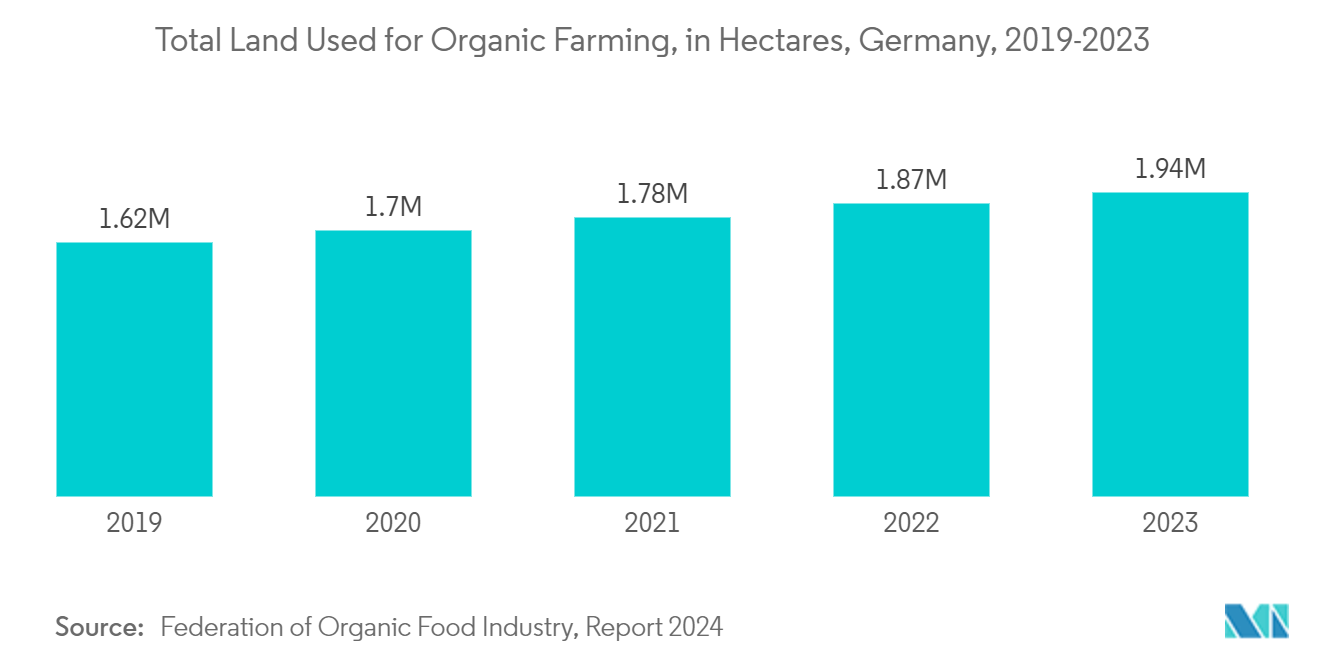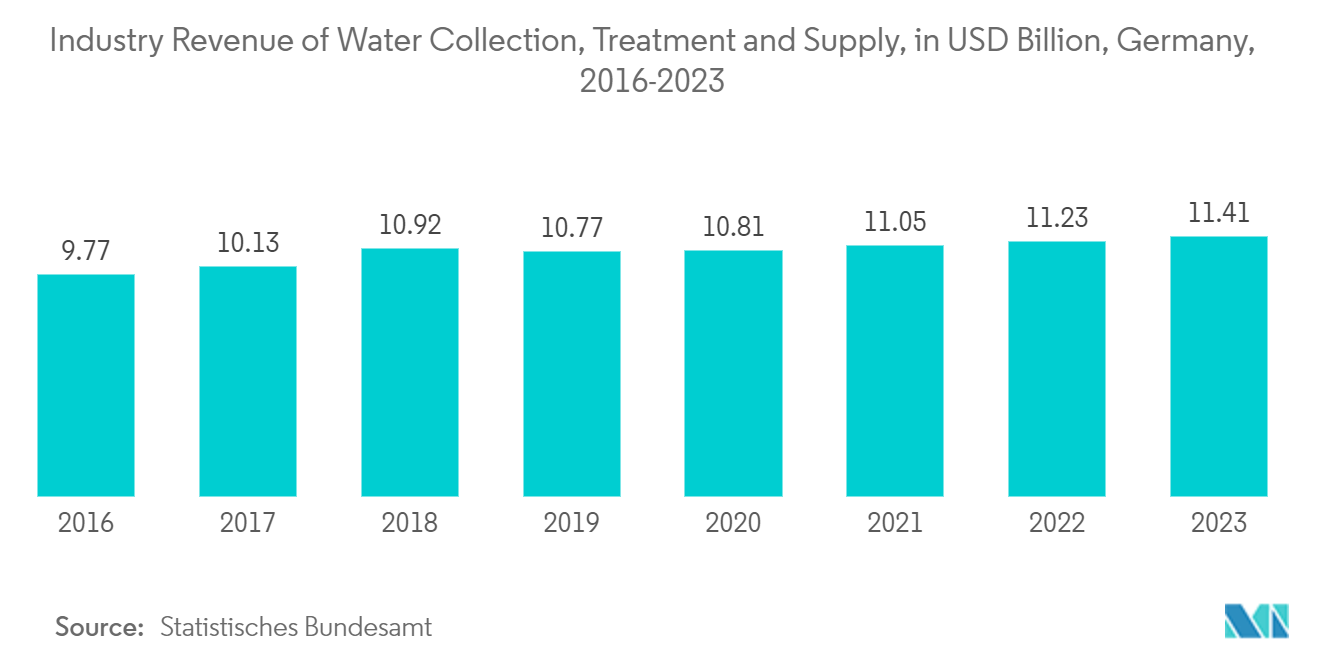Market Trends of Europe Biochar Industry
Increasing Demand from the Agricultural Industry
- Biochar is a charcoal-like substance created by burning organic material from agricultural and forest wastes (also known as biomass) in a controlled process known as pyrolysis. Using biochar as a fertilizer for the soil improves the soil's quality and nutrient-carrying and cycling ability, leading to long-term carbon sequestration.
- Biochar can also remediate contaminated soil while providing environmental benefits. Due to its porous structure, biochar includes a low bulk density that helps to achieve a high specific surface area ranging between 50 and 900 m2 g-1 and a high water-holding capacity.
- Europe includes a sophisticated and highly competitive agro-input market with a large and growing organic industry. The rising consumption of organic food presents potential growth opportunities for the organic farming industry. Therefore, many new producers are now entering the market, meeting the voluntary European Biochar Certificate (EBC) standard.
- While strong market growth is encouraging, organic farmland area must continue to expand faster to meet the European Commission's (2020) Farm to Fork strategy goal of 25% organic area share by 2030. Among European consumers, common reasons for buying organic food include supporting local businesses, health reasons, and not using pesticides or other sprays.
- The organic farming industry is witnessing steady growth across Europe. For instance, Germany is aiming to have a third of all farms organic by 2030 as part of an effort to restructure its agriculture. However, with rising inflation, farmers are asking for more government support.
- Similarly, according to a report published by the European Commission, in France, under the government program, 2023-2027 will see a 36% increase in support for conversion to organic farming, reaching an average of EUR 340 million (USD 376 million) per year. The objective is to double the area covered by organic farming and reach the 18% target of the union agricultural area (UAA) covered by organic farming by 2027.
- Furthermore, as per the SINAB (National Information System on Organic Agriculture), in 2022, approximately 432,000 hectares of Italian land were dedicated to the cultivation of organic forage, while roughly 428,000 hectares were allocated for organic meadows and pastures.
- Thus, owing to the factors above, the demand for biochar in organic farming is anticipated to rise exponentially during the forecast period.

Germany is Anticipated to Dominate the European Market
- Germany is among the top countries actively executing several biochar projects in Europe. For instance, in the German demo site at the Unteres Odertal National Park, low-nutritional grass from the wetlands is converted into biochar through pyrolysis or hydrothermal carbonization (HTC).
- Biochar significantly benefits the agriculture industry by enhancing soil fertility, promoting carbon sequestration, utilizing organic waste, improving microbial activity, and potentially reducing greenhouse gas emissions.
- According to preliminary calculations by the Federal Agricultural Information Center (BZL), German crop production was valued at EUR 37.3 billion (USD 40.5 billion) in 2023, up by 1.4% annually.
- Biochar is also widely used as animal feed in livestock farming in Germany.
- As per the German Feed Association (DVT), animal feed production in Germany reached 16.1 million tons in 2023. According to Statistisches Bundesamt (a federal authority of Germany), the Import value of food and animal feed to Germany was EUR 64.64 billion (USD 70.18 billion) in 2022 and registered growth when compared to EUR 62.79 billion (USD 68.17 billion) in 2021.
- Biochar is linked to water purification through its ability to adsorb contaminants and improve water quality. When added to water treatment systems, biochar acts as a filtration medium, effectively capturing impurities such as heavy metals, organic pollutants, and nutrients. Its porous structure provides a large surface area for adsorption, making it an effective and sustainable method for water purification. This application is valuable in addressing water pollution issues and enhancing the overall quality of water resources.
- Biochar is also being used more extensively in the water treatment industry. The German water treatment industry is the largest in Europe and continues to grow considerably. The country includes the largest market for industrial wastewater treatment (WTP) plants across Europe.
- There are around 3,000 treatment plants spread across the region, with around 12,000 discharging companies. Every year, more than 920 million cubic meters of industrial wastewater is treated before being safely discharged into the environment.
- According to the Statistisches Bundesamt, the industry revenue of water collection, treatment, and supply in Germany was valued at USD 11.41 billion in 2023 and is projected to reach USD 11.73 billion by 2025.
- Thus, the abovementioned factors indicate the growth of end-user applications of biochar in Europe, thereby strengthening demand for biochar during the forecast period.


